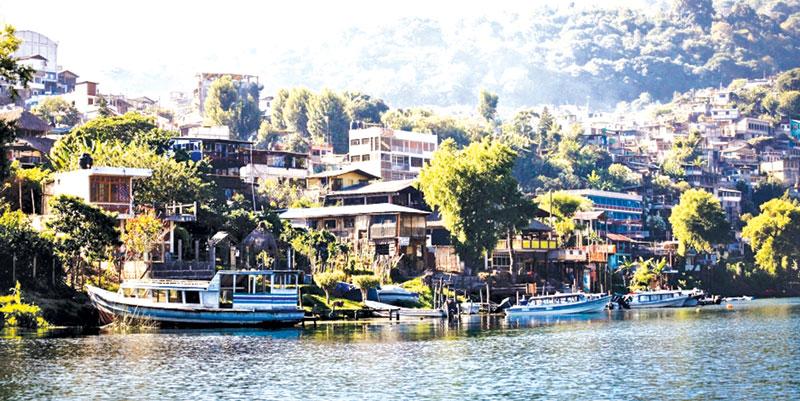
In a world where vital resources are increasingly scarce, nations cannot afford to flush them down the drain. But that is exactly what we do. After we use water in our homes and businesses, it is washed away, and takes many valuable resources with it.
Wastewater is rich in carbon and nutrients and - if collected and treated properly - it could provide new water, fertiliser, and energy. A number of nations and major cities have already built sophisticated wastewater treatment plants that effectively recover nutrients and bioenergy, and produce “new water” that can be reused. But more than 80% of all wastewater still currently flows into natural ecosystems, polluting the environment and taking valuable nutrients and other recoverable materials with it.
While wastewater systems in large cities are often effective, they are also very expensive to construct and costly to maintain and operate. This is still better than the situation in smaller cities. There, you frequently find badly adapted systems that lack the necessary staff to perform the needed maintenance and operation.
In Latin American countries, those living in small and medium-sized cities have, at most, onsite treatment in the form of septic tanks that lack regular and proper maintenance.
In Guatemala, only about 5% of cities with fewer than 2,000 inhabitants have centralised treatment plants; and in the Atitlán Lake Basin in Guatemala, roughly 12% of the population is not connected to any kind of sanitation system at all. If any infrastructure exists in these areas, its main goal is to collect wastewater, not to treat it and reintroduce it into the water cycle.
This is even more problematic if we consider that, according to the United Nations Population Fund, the populations of small and medium-sized towns will double in Latin America over the next 15 years and double again in the coming 30 years. And yet, most efforts to improve wastewater management focus on the region’s big cities.
Imagine that outside one of these small cities lies a lovely piece of land: on the surface it is aesthetically pleasing and provides refuge for local wildlife. Beneath the surface is a wetland that treats wastewater and produces energy. The energy produced saves families from having to resort to using firewood collected in the wild or manure for cooking purposes. What’s more, the outflow of this wetland can be used safely in crop irrigation.
This is not a dream scenario. It is called a “constructed wetland environment” and is already in practice on a small scale worldwide.
As part of a team looking into the potential of constructed wetland environments, we have analysed 800 examples of biomass in more than 20 countries.
We found that, depending on climate and the kind of plants used in the construction of this type of wetland, up to 45 hectares of land could be irrigated using wastewater on a daily basis. This would reduce the need for fresh water for irrigation and energy for pumping.
Under this system, a hypothetical community of 60 people would require a wetland area of about 420 square metres. And this wetland could supply the community with 630 kilogrammes per year of dry biomass, which could go on to produce ten gigajoules per year of energy. To put that in perspective, an average household in Ethiopia requires about seven gigajoules for cooking and there are about five people per home, so the annual energy requirement for cooking in this community of 12 homes is about 84 gigajoules.
The biofuel produced by the wetland can, therefore, supply about 12% of the cooking fuel needs of the village. And by reducing cooking fuel needs by 12%, this village can save half a hectare of forest per year on average.
Another solution is constructing decentralised wastewater treatment plants in affected communities. Unlike city wastewater treatment plants, decentralised plants treat raw wastewater directly where it is produced instead of being confined in the sewer system. In rural areas, this setup can provide ready access to clean water and reduce environmental pollution.
- Ourworld.uni.edu
